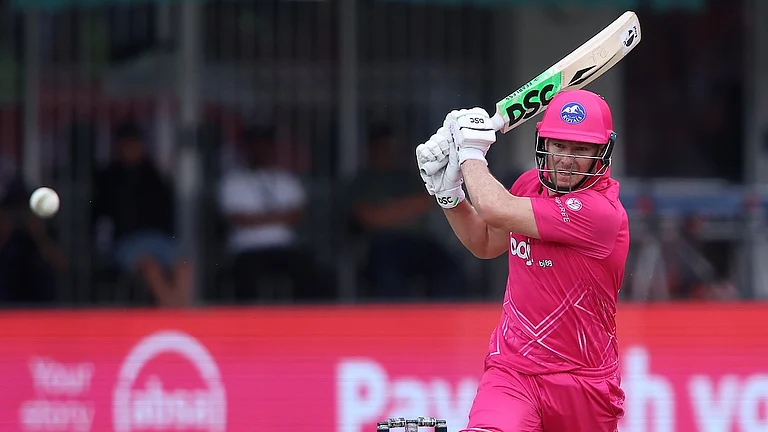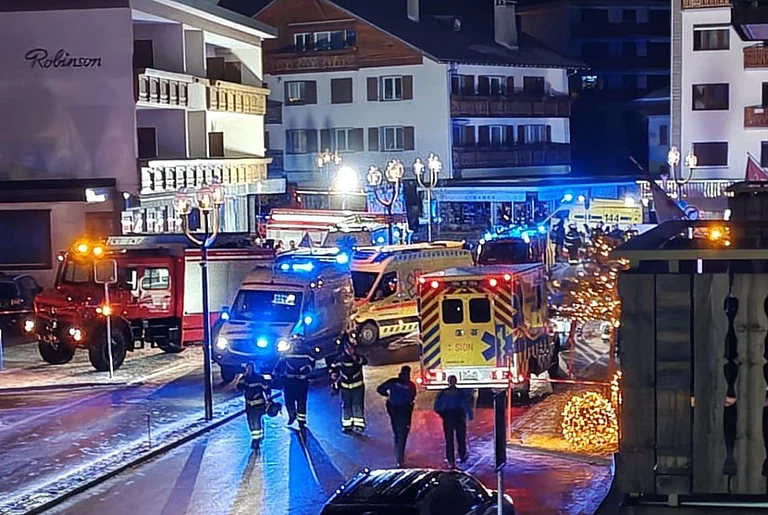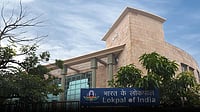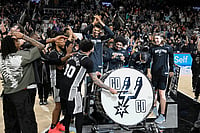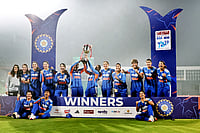Nature's freak earns instant celebrity. Even divinity. The two-headed Siamese twins born a fortnight ago in Mumbai are at once a medical challenge and a divine gift to their parents.
As the Dr Kishore D. Patil Nursing Home in the Nallasopra suburb discharged the twins, ridding itself of curiosity-mongers, parents Jawahar Gupta and wife Kamal refused even preliminary investigations. They also rejected magnanimous offers from local hospitals Wadia, J.J. and Sionof free medical investigations, surgery, post-operation care, all worth Rs 10-15 lakh.
The wailing babies weighing a mere 4.8 kg, with soft cotton to cushion impact between the heads, have two arms, two legs, a rudimentary arm and leg and are, in text-book terms, thoraco-omhalopagus (conjoined from neck downwards). The sonography showed twins. They (the parents) came to us very late into pregnancy, says Dr Patil, still distressed over their rejection of medical aid. Charity organisations have offered, from CT scan, sonography (Rs 3,000 and Rs 500 respectively), to ambulance service. We didn't tell Kamal directly, but have hinted at slim chances of survival. Though they're normal, he fears the babies may have seizures later if the blood flow falters under pressure of supplying to two brains.
Dr Santosh Karmarkar, paediatric surgeon at Wadia Hospital who tried to convince Jawahar, is worried the children might end up as exhibits in local melas. The trickle of gaping locals has already surged into a flood blocking traffic off the hospital, requiring a police presence, while a neighbouring xerox centre has reportedly made photocopies of the babies' photo to earn a fast buck.
The term Siamese twins probably dates back to the Chang-Eng duo born in 1811 in Siam. The two, merged at the chest, earned their living as freaks in the famous Barnum & Baily Circus, living to be 63, fathering 21 children. The most recent, widely reported case, also occurred in Mumbai last yearSiamese twins among triplets, sharing a heart membrane. Wadia hospital paediatric surgeons Dr Ila Meiseri, Dr Karmarkar, with Hinduja Hospital heart surgeon Dr N. Mandke surgically separated the boys, joined from neck to waist. Though the operation was a success, the twins died within a week.
You get identical twins if an embryo splits at the two-cell stage; conjoined twins if the split stops midway. Ahmedabad-based gynaecologist Dr Rajan Joshi cites a survey in Thailand that places Siamese births at 1 to every 60,000 deliveries and quotes from William's Obstetrics to identify the craniopagus twins that's joined at the head, pygopagus (at the rump), thoracopagus (at the upper-half of the trunk); cephalopagus (upper half joined, faces turned away, sometimes sharing a heart), ischiopagus (body's lower half), omphalopagus (mid-trunk).
Since no preliminary tests have been allowed in this case, the fraternity can only attempt guesswork. Paediatric surgeon Dr J. Kirtane advises separation surgery only in emergencies. If they share a cardiovascular system where one baby is in a superior position we must operate immediately since the blood would drain off one child. Where they co-exist with normal functions, they may be operated on later.
Dr Karmarkar recalls a pair of 20-year-old American Siamese girls melded at the head, both heads facing away. If one was reading a book, the other was scanning a magazine. One was a dwarf; the taller girl would carry her around. Separation wasn't attempted since it might have damaged the brain tissue. Siamese births aren't as rare as imagined, he adds. Most major medical institutes in India see a case every two-three years. Even separation costs aren't as phenomenal; a four-hour surgery toting up a bill of Rs 50,000. Today we're technologically progressed enough to handle such cases. Pre-and-post op mortality is very high. Even if the babies are allowed to live conjoined, they need medical intervention later.
Not all twins are intricately linked. Complications arise only when the organs are fused, says Dr Karmarkar. In which case, the disadvantaged baby (in terms of body functions, organ placement) is often sacrificed for the infant with greater survival chances. If allowed, the surgeons will look for shared organs in the Nallasopra twins. Immediate intervention would be needed if they share a common heart cavity, or liver. Some respite is allowed if they share a gastro-intestinal system or a kidney.
But paediatric surgeon Dr Anirudh Shah believes the twins can't be separated since they share a trunk. I know of several cases abroad where Siamese twins live joined for life. A case like this may interest doctors, but the choice is more than that of life-and-death. Even if both survive, one will have to live without limbs. The parents are wiser. Maybe. But just now.







.jpg?auto=format%2Ccompress&fit=max&format=webp&w=768&dpr=1.0)
